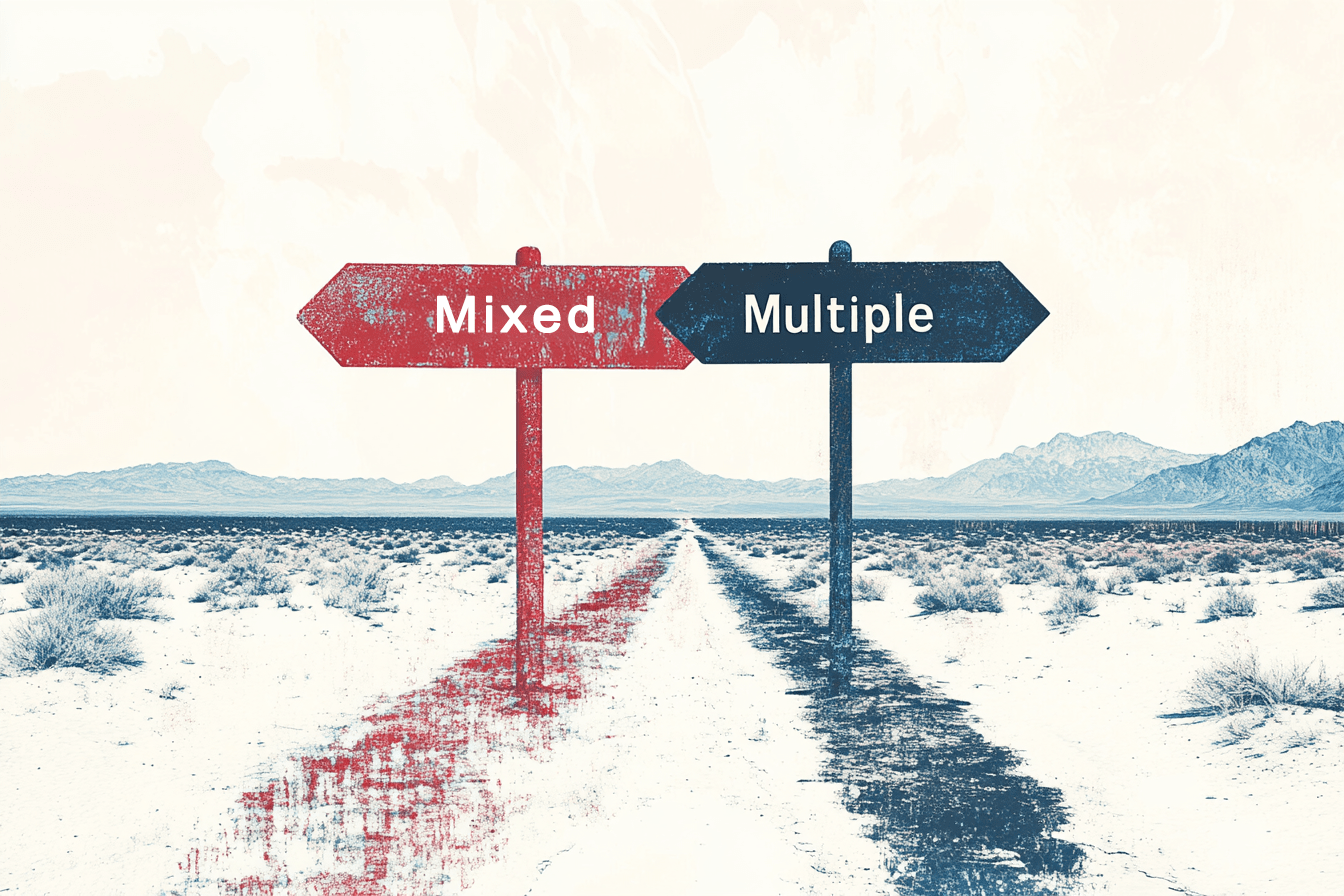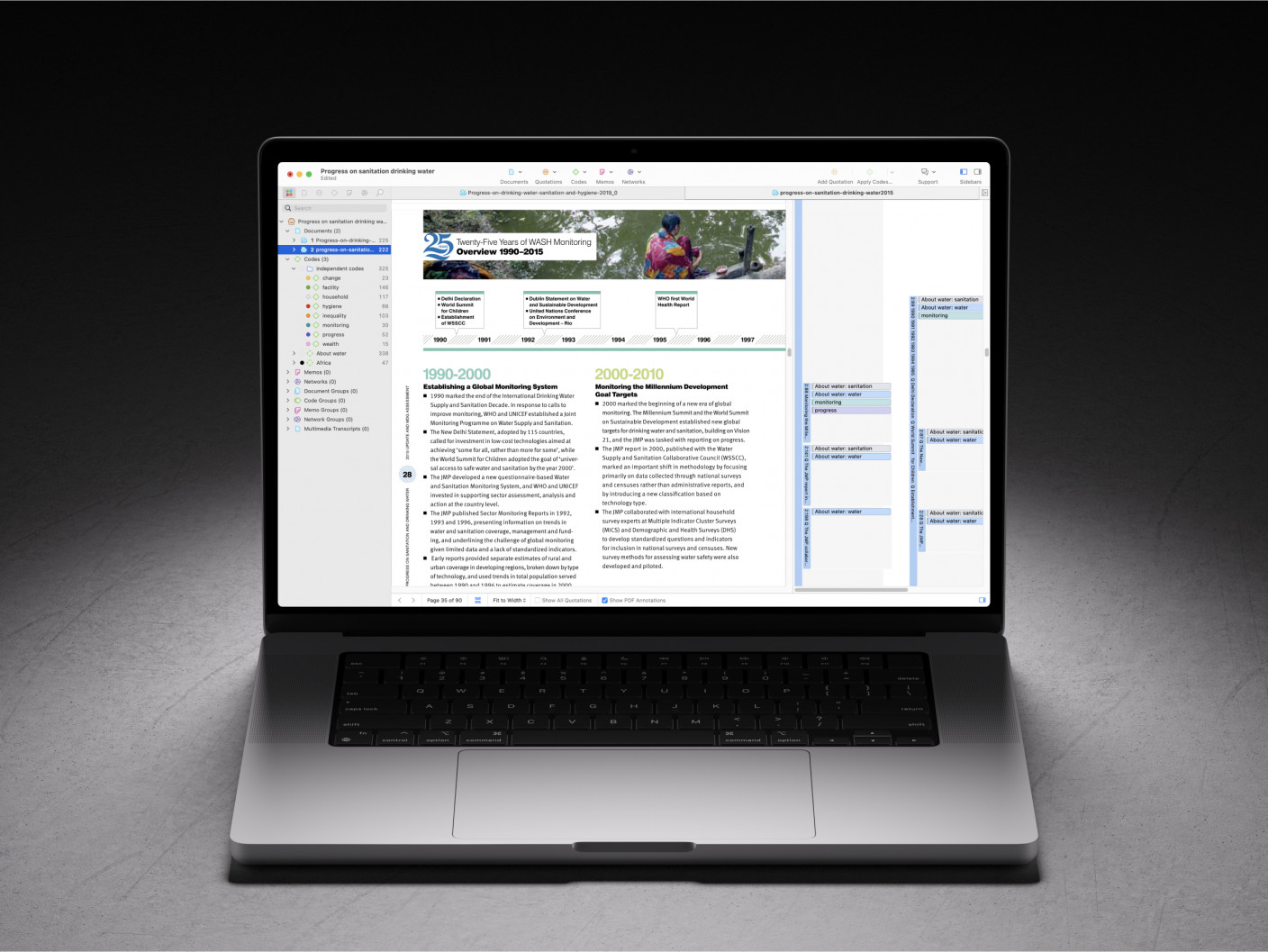- What is Mixed Methods Research?
- Advantages of Mixed Methods Research
- Challenges in Mixed Methods Research
- Common Mistakes in Mixed Methods Research
- Mixed Methods Research Paradigms
- Validity & Reliability in Mixed Methods Research
- Ethical Considerations in Mixed Methods Research
- Mixed Methods vs. Multiple Methods Research
- Mixed Methods Research Designs
- How to Choose the Right Mixed Methods Design
- Convergent Parallel Design
- Explanatory Sequential Design
- Exploratory Sequential Design
- Embedded Mixed Methods Research Design
- Transformative Mixed Methods Design
- Multiphase Mixed Methods Research Design
- How to Conduct Mixed Methods Research
- Sampling Strategies in Mixed Methods Research
- Data Collection in Mixed Methods Research
- Triangulation in Mixed Methods Research
- Data Analysis in Mixed Methods Research
- How to Integrate Quantitative & Qualitative Data?
- How to Interpret Mixed Methods Research Findings?
- Software Tools for Mixed Methods Data Analysis
- How to Write a Mixed Methods Research Proposal
- How to Write a Mixed Methods Research Paper?
- Reporting Results in Mixed Methods Research
- Mixed Methods Research Examples
- How to cite "The Guide to Mixed Methods Research"
Mixed Methods vs. Multiple Methods Research
Multiple methods refer to using more than one data collection or analysis method within the same research paradigm (either qualitative or quantitative). Unlike mixed methods research, which integrates qualitative and quantitative approaches, multiple methods research remains within a single methodological tradition.

Introduction
Multiple methods research involves using more than one research method within the same paradigm—either qualitative or quantitative—within a single study. Researchers apply this approach to explore different aspects of a research problem while staying within one methodological tradition. Unlike mixed methods research, which combines qualitative and quantitative data, multiple methods research enhances depth, validates findings, and reduces methodological limitations by using different strategies within a single paradigm.
Researchers use multiple methods to strengthen their study, capture different dimensions of a subject, and confirm results from different perspectives. For example, in qualitative research, researchers might combine in-depth interviews with participant observations to compare what participants say with their actual behaviors. In quantitative research, they might use surveys alongside experimental data to measure patterns more accurately. This flexibility makes multiple methods research useful for studying complex social, cultural, and behavioral topics.
Benefits of using multiple methods over mixed methods research
Multiple methods research offers several advantages over mixed methods research, particularly when researchers want to maintain methodological consistency while gaining diverse insights. While mixed methods research integrates qualitative and quantitative approaches, multiple methods research stays within the qualitative or quantitative paradigm, allowing for a more cohesive research design. Below are some key benefits of using multiple methods instead of mixed methods.
Methodological consistency
Researchers who use multiple methods maintain a consistent epistemological and methodological foundation throughout the study. Since all methods fall within either qualitative or quantitative methods, they align more naturally in terms of data collection, analysis, and interpretation.
For example, in a qualitative study on organizational culture, using interviews, focus groups, and document analysis ensures that the entire research process follows a qualitative epistemology. In contrast, mixed methods research would require integrating quantitative and qualitative data, which might not fit well with interpretive qualitative findings.
Reduced complexity in data integration
Mixed methods research often requires complex integration techniques to merge qualitative and quantitative data, which can lead to difficulties in interpretation. Researchers must reconcile different types of data, apply conversion techniques (e.g., quantifying qualitative data), and justify how disparate data sources contribute to a single research question.
Multiple methods research avoids this complexity by keeping the data within a single paradigm. Since researchers do not have to convert or integrate fundamentally different types of data, analysis and interpretation become more straightforward.
As an example, a multiple methods study on voting behavior may includes survey-based polling data and experimental testing of campaign messages, ensuring all results remain quantitative. A mixed methods approach, however, would require integrating numerical survey data with qualitative interviews, making synthesis more challenging.
Stronger theoretical coherence
Since multiple methods research remains within a single research tradition, it maintains a clear theoretical foundation. Researchers can apply theories consistently without adjusting for different methodological assumptions.
In mixed methods research, quantitative and qualitative approaches often operate under different theoretical frameworks. For instance, qualitative research may rely on constructivist theories, while quantitative research may follow positivist paradigms. Reconciling these differences can create theoretical tensions that do not exist in multiple methods research.
A researcher studying teacher-student interactions might use classroom observations and thematic analysis of teacher journals (both qualitative), ensuring theoretical coherence. A mixed methods approach might require integrating student test scores (quantitative data), which introduces different theoretical assumptions about learning outcomes.
Greater depth within a single paradigm
Multiple methods research allows for deeper exploration of a topic within one methodological tradition, which is especially useful for studies requiring a high level of detail. Mixed methods research, by contrast, often requires balancing breadth (quantitative data for generalization) and depth (qualitative data for rich descriptions), which can limit the extent to which each approach is fully developed.
Less resource-intensive
Mixed methods research often requires researchers to develop expertise in qualitative and quantitative methods, which increases time, training, and analytical complexity. Researchers also need access to different data collection tools, software, and analytical techniques for both paradigms.
Multiple methods research, however, requires only expertise in one paradigm. Researchers can streamline training, reduce the complexity of data collection and analysis, and avoid the need for interdisciplinary collaboration when it is unnecessary.
For example, a researcher studying customer satisfaction could use structured interviews, content analysis of online reviews, and ethnographic observations (all qualitative), avoiding the need for statistical expertise and large-scale survey distribution.
More seamless data collection and analysis
Since multiple methods research focuses on a single type of data, researchers can design studies that avoid conflicts in data collection logistics. Mixed methods research often requires separate sampling strategies for qualitative and quantitative data, different consent procedures, and different timing for data collection phases.
For example, a researcher conducting a multiple methods ethnographic study could combine observations, narrative analysis, and document review without needing different participant recruitment strategies. A mixed methods study, in contrast, might require additional survey participants, complicating the research process.
More straightforward ethical review and approval
Since multiple methods research remains within a single research tradition, it often faces fewer ethical hurdles than mixed methods studies. Institutional review boards (IRBs) or ethics committees typically evaluate qualitative and quantitative methods differently, requiring distinct ethical considerations for participant confidentiality, informed consent, and data handling.
A multiple methods study can streamline the ethical approval process by focusing on one set of methodological considerations.
Types of multiple methods research
Multiple qualitative methods
Researchers who use multiple qualitative methods rely on different data collection or analysis techniques to examine a phenomenon from various perspectives. This approach helps them identify patterns, compare narratives, and strengthen their interpretation of data.
For example, a researcher studying workplace culture might conduct semi-structured interviews with employees to understand their perspectives on teamwork. At the same time, they could observe workplace interactions to analyze real-time behaviors. Additionally, they might review internal communication documents to see how leadership communicates values and expectations. By applying multiple qualitative methods, the researcher gathers diverse forms of data, allowing them to cross-check findings and identify gaps in any single method.
Multiple quantitative methods
When researchers use multiple quantitative methods, they apply different data collection or statistical techniques to analyze their research questions. This approach helps them compare results, validate conclusions, and reduce reliance on a single data source.
For instance, a researcher studying consumer purchasing behavior might distribute a survey to collect self-reported shopping habits. Simultaneously, they could analyze retail transaction records to track actual spending patterns. To add another layer of insight, they might conduct a controlled pricing experiment to test how discounts influence buying decisions. Using multiple quantitative methods helps them determine whether self-reported behaviors align with real-world actions and whether experimental changes lead to measurable differences.
Different methods within a single paradigm
Multimethod research involves using distinct but complementary methods within either a qualitative or quantitative paradigm. Researchers choose this approach when one method alone cannot fully address their research question.
For example, in a qualitative study on leadership styles, a researcher might conduct a narrative analysis of CEOs’ accounts of workplace challenges while using thematic analysis to identify recurring themes across multiple leadership case studies. In a quantitative study, a researcher might analyze longitudinal survey data to track changes in employee job satisfaction over time while conducting cross-sectional studies to capture snapshots of employee morale at different points.
By applying multiple methods within a single paradigm, researchers gain deeper insights, confirm findings through different techniques, and reduce the risk of overlooking important details.
Advantages of multiple methods
- Enhanced depth and nuance: Using multiple methods within the same paradigm allows for a more comprehensive exploration of a research topic. Each method captures different aspects of the phenomenon, leading to richer insights than relying on a single approach.
- Increased consistency: Since multiple methods examine different facets of the research question, findings can be cross-validated within the same paradigm. This helps improve internal consistency, ensuring that the results are not dependent on just one data collection technique.
- Methodological coherence: Unlike mixed methods, which require the integration of distinct epistemological traditions, multiple methods research stays within a single research framework (qualitative or quantitative). This makes it easier to maintain theoretical and methodological consistency while still benefiting from varied data sources.
- Flexibility in data collection and analysis: Researchers can adapt multiple methods to explore different dimensions of their research question. For example, in qualitative research, interviews, focus groups, and document analysis can be used to provide different perspectives on the same topic.
- Stronger justification for findings: Employing multiple methods within the same paradigm helps strengthen the credibility of results. If similar findings emerge from different methods, it reinforces the robustness of the conclusions.
Challenges of multiple methods research
- Time-consuming data collection and analysis: Since multiple methods require different data collection strategies, researchers often spend significant time gathering and analyzing data. This makes multiple methods resource-intensive, requiring careful planning and execution.
- Potential for methodological conflicts: Even within the same paradigm, different methods may yield slightly divergent findings, making it challenging to synthesize results into a coherent narrative. Researchers must carefully interpret the data and decide how to reconcile any inconsistencies.
- Complexity in research design: Multiple methods research requires careful coordination of different approaches to ensure methodological alignment. Poor planning can lead to redundancy or gaps in data collection, affecting the study’s effectiveness.
- Requires expertise in multiple techniques: Researchers need to be proficient in various data collection and analysis methods within their chosen paradigm. A lack of expertise can lead to ineffective application of one or more methods, weakening the overall study.
- Larger data management demands: Collecting data through multiple methods generates large and diverse datasets, which can be difficult to organize and analyze efficiently. Researchers need effective data management strategies to avoid inconsistencies and maintain accuracy.
Triangulation vs multiple vs mixed methods research
Multiple methods, mixed methods, and triangulation differ in their approach to data collection and analysis. Multiple methods research uses more than one technique within the same paradigm—either qualitative or quantitative—allowing researchers to explore different aspects of a research question while maintaining methodological consistency.
Mixed methods research, on the other hand, integrates both qualitative and quantitative approaches within a single study to provide a more comprehensive understanding by combining numerical data with detailed, contextual insights.
Triangulation is a broader concept that applies to multiple and mixed methods; it involves using different data sources, methods, researchers, or theoretical perspectives to cross-validate findings and enhance credibility. While multiple methods and mixed methods focus on how data is collected and combined, triangulation focuses on verifying results through comparison from different perspectives.
How to do multiple methods research?
1. Define the research question and justify the use of multiple methods
Researchers begin by clearly defining their research question and explaining why a single method cannot fully answer it. They determine which aspects of the research problem require different approaches and decide how multiple methods will strengthen their analysis.
For instance, a researcher studying social media’s impact on mental health might recognize that self-reported surveys alone will not capture behavioral patterns. By adding content analysis of social media posts, they can compare what participants say about their experiences with how they engage online. This combination ensures a stronger interpretation of results.
2. Select appropriate methods (qualitative or quantitative)
Once researchers define their research question, they choose methods that fit their objectives while staying within a single paradigm. They consider different qualitative techniques, such as interviews, focus groups, and document analysis, or various quantitative approaches, such as surveys, experiments, and statistical modeling.
To illustrate, in a qualitative study on community health programs, a researcher might use focus groups to explore public perceptions, interviews with health officials to understand policy decisions, and media analysis to track public discourse on health initiatives. In a quantitative study on exercise habits, a researcher might distribute fitness surveys, analyze wearable device data, and use experimental testing to measure changes in activity levels over time.
3. Determine research design and sequencing
Researchers must decide whether to conduct methods simultaneously or in a specific order:
Parallel design: Data is collected and analyzed from different methods at the same time.
Sequential design: One method is used first and its findings shape the next method.
Convergent design: Multiple methods are used separately and their results are later compared.
As an example, a mixed methods researcher studying political campaign strategies might first conduct a survey to measure voter perceptions (quantitative) and then follow up with interviews to understand voter motivations (qualitative). In a multiple methods approach, a researcher might use either multiple types of surveys or multiple qualitative techniques (such as interviews and content analysis).
4. Conduct data collection
Researchers gather data using the selected methods while ensuring consistency and alignment with ethical standards. They consider sample selection, data quality, and potential challenges that could arise from using multiple techniques.
For example, a researcher studying housing affordability might collect survey responses from renters, analyze real estate price trends, and review government policy documents. Each method provides different pieces of data that, when combined, offer a clearer picture of housing challenges.
5. Analyze data using methods from the same paradigm
Once data collection is complete, researchers analyze findings within the same methodological framework. They might use qualitative techniques like thematic analysis, grounded theory, or discourse analysis. For quantitative studies, they might apply statistical analysis, predictive modelling, or experimental comparisons.
Take, for example, a researcher studying digital marketing effectiveness. They might analyze survey responses using statistical correlation tests while also conducting A/B testing on ad performance. If they were using multiple qualitative methods instead, they might compare themes from interviews with findings from social media content analysis.
6. Integrate findings and compare results
Researchers compare the results from different methods to identify patterns, contradictions, or new insights. They determine whether findings align, complement each other, or reveal unexpected variations. This step ensures that multiple methods provide meaningful contributions to the research question.
Consider the case of a study on remote work productivity. If surveys suggest employees feel more productive but observational data shows longer response times in emails, researchers might explore why perceptions and behaviors differ.
7. Report findings clearly and explain the role of multiple methods
Researchers present their findings with a clear explanation of how different methods contributed to the study. They discuss how multiple methods strengthened their conclusions and highlight any inconsistencies or limitations.
To provide an example, in a study on online learning engagement, a researcher might report that while student surveys indicated high satisfaction, platform analytics showed low participation in discussion forums. Explaining these contradictions helps provide a more accurate interpretation of the research findings.
Conclusion
Multiple methods and mixed methods research serve different purposes. Multiple methods stay within a single paradigm, ensuring methodological consistency, theoretical coherence, and streamlined data collection. In contrast, mixed methods combine qualitative and quantitative approaches for broader insights but require complex integration.
Choosing between them depends on research goals. Multiple methods work best for in-depth exploration within one framework, while mixed methods offer diverse perspectives. Selecting the right approach strengthens findings and enhances research effectiveness.


